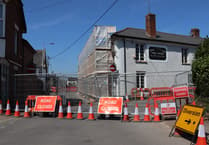EVERYONE agrees we need to build more houses across the country.
We need homes for our young people to get onto the property ladder and start a family, and so that workers can find appropriate housing in the areas they want to work. It’s vital for our economy and society.
We politicians have often liked to talk about housing as a big numbers game, declaring our ambitions for how many we want to build nationally.
The new Labour administration is no different, with a pledge to build 1.5 million homes over the course of the next five years.
My own Conservative Party’s manifesto actually promised slightly higher than this.
But if building hundreds of thousands of extra homes each year is going to actually deliver the benefits we want it to, they have to be the right houses in the right places.
There is no point in building just anywhere, even if it would technically allow the new Housing Secretary and Deputy Prime Minister, Angela Rayner, to say she has met her target.
Homes need to be built where people actually want to move to, and normally that means building where there are jobs being created and the local economy needs workers.
With that in mind, I raised an eyebrow at the announcement of the new formula for calculating local housing targets to meet Labour’s pledges on housebuilding.
The government seem to be expecting some parts of the country, including rural communities like ours, to take a much bigger share of the burden than others.
Not only does that not seem fair, it also seems economically wrong too. The whole point of the exercise is that we have consistently added to our housing supply more slowly than demand for housing has risen.
If we are not going to build in the places where demand is actually highest, we are wasting our time.
Worse than that, we are risking the irrevocable loss of our precious rural green areas and countryside to build houses that would have been far more useful if they had been built somewhere else.
The proposed new formula would see a 65 per cent increase in the target for the Mid Devon district, for example, and a 57 per cent increase for the West Devon district. The same plans would see a 20 per cent reduction in the target for housebuilding in London.
In the Conservative manifesto, we took great pains to demonstrate that not only were we committed to building more but that we would focus on building where the homes were actually needed.
That included plans for development corporations for new urban regeneration schemes, raising density in city centres, and focusing on brownfield land in our 20 largest cities.
If we get it right, a housebuilding drive has the potential to unlock huge economic potential, better jobs, better productivity and ultimately a better quality of life for many people. But build for building’s sake is not the way to do that. Build more, yes, but build smarter.





Comments
This article has no comments yet. Be the first to leave a comment.